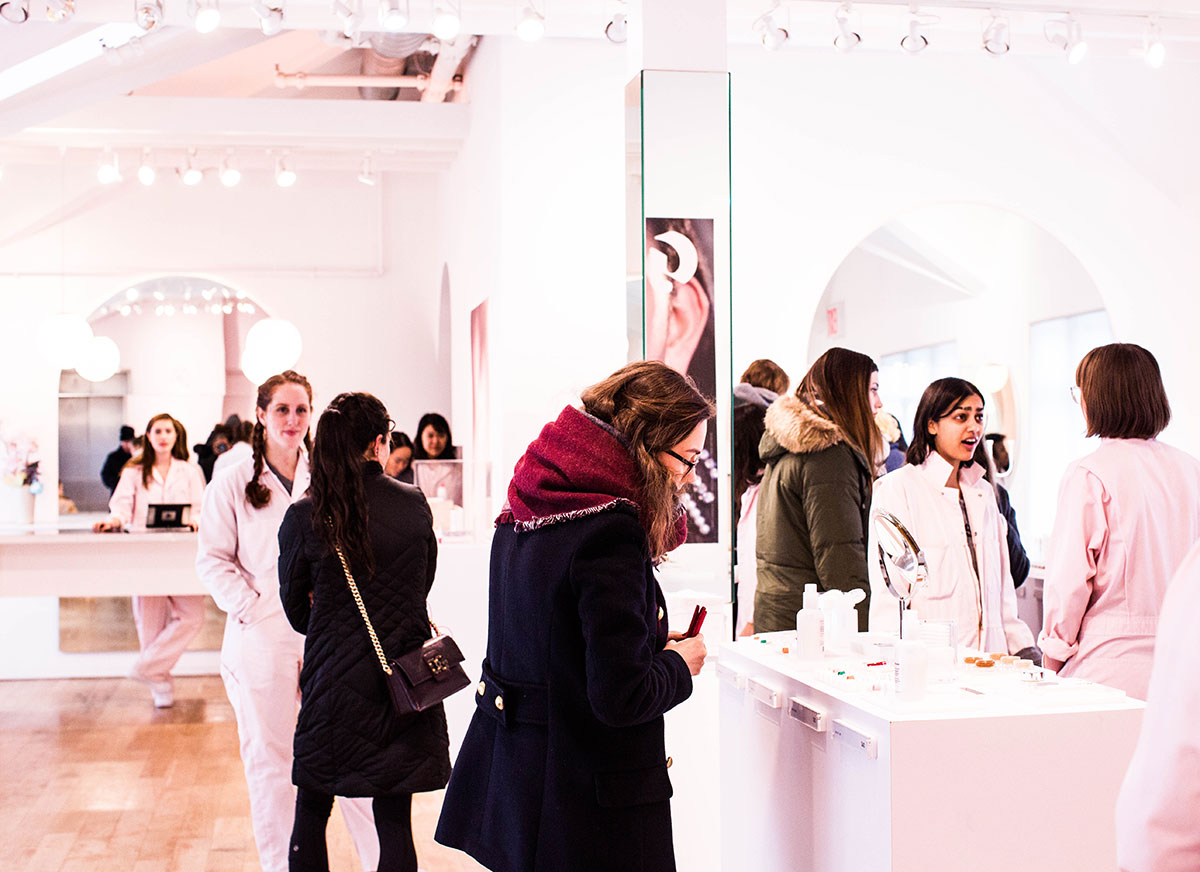We’ve debunked the myth of this year’s retail apocalypse. The industry as a whole needed a reset, and while store closures were an inevitable result, the industry has been filled with emerging brands moving from direct-to-consumer to brick-and-mortar. While some are new, others have been on the rise for a while forging ahead a new future of retail.
Away
With a direct-to-consumer brand built around travel, it’s no surprise that Away is making the foray into brick-and-mortar. CEO Steph Korey and Jen Rubio, who were previous execs at Warby Parker, founded the smart luggage company in 2015. If there’s any duo who knows a thing or two about this business model it’s them. The brand’s suitcases solve real-world travel problems with smart features like an ejectable battery for charging and a sleek design that protects against the elements. Interviewing more than 800 frequent fliers, they did their homework to find out what features mattered most. Since then they’ve been focused on building a lifestyle brand around travel with a magazine, “Here” and a podcast, “Airplane Mode,” and several pop-ups. Recently the brand “grounded” its luggage with the launch of brick-and-mortar locations in New York and Los Angeles. As a one-stop-shop for your travel essentials, they carry a highly curated assortment of goods you’ll want to pack for your next trip from sleep masks to travel-sized toiletries.
Allbirds
Silicon Valley’s sneaker startup Allbirds is soaring these days. Described as “the world’s most comfortable shoes,” the sneakers are made from renewable merino wool and building a cult-like following from conscientious consumers. After dipping a toe in the physical retail space with pop-ups, the brand opened its first brick-and-mortar location last year in San Francisco and recently opened a second location in New York. While they might be serious about sustainability, in-store elements like a human-sized hamster wheel for test-runs and a one-on-one consultation bar, remind customers it’s a fun brand making quality, eco-friendly products accessible. Backed by high-profile investors like Jeff Raider and David Gilboa, co-founders of Warby Parker, we think it could be just the beginning of innovative material products and interactive retail spaces for this brand.
Boll & Branch
Offering high quality, luxury sheets, blankets, and towels at a fraction of competitors’ costs, Boll & Branch launched online in 2014. Made exclusively from fair trade and organic materials they provide their customers with a transparent view of the origin of their cotton down to the farm in which it was picked. Finding it difficult to fully convey the quality of their product though the brand launched a retail store in the Short Hills Mall in New Jersey. Originally designed as a showroom where customers could touch and feel the product before making a purchase and delivered to their home, the brand is exploring operational efficiencies to make in-store inventory available for instant gratification. The bedding brand now plans to open 20 stores nationwide in the next two years. With a customer base in their late 40’s the brand is exploring premier shopping destinations in prominent suburbs instead of urban or coastal cities.
Untuckit
Struggling to find a button-down shirt that looked good untucked is the simple concept that built a million dollar menswear brand. Founded by Chris Riccobono, Untuckit currently fulfills the demand of men looking to be both casual and refined. In addition to recently adding a womenswear line, Untuckit has expanded its product line to include children’s apparel (for boys) and men’s pants. Opening physical retail spaces has allowed the brand to grow while also offering customers a high-touch product experience and personalized service. Untuckit is currently testing RFID technology for data and inventory management to make efficient use of the footprint, and understand how to best serve the customer both on and offline. With 25 stores currently in New York, Boston, Tampa, Philadelphia, San Diego, Portland, Los Angeles, Austin, Atlanta, Dallas, and Chicago, the brand plans to open more than 100 stores over the next five years with 50 of those stores opening by the end of this year.
Glossier

Beauty brand Glossier made its name in the industry initially as an online retailer built from a blog, Into the Gloss, with thousands of beauty ambassadors in full on social support. After a handful of successful pop-ups on the west coast, the brand opened its first permanent retail store in New York, and next month it will be launching a second location in Los Angeles. With a test, try, and buy experience, on-site staff or “editors” as they call them are there to guide customers through the brand’s most coveted products. Tapping into the Millennial mindset of social activation, we have to think the second location will dawn the elements that can’t be experienced online.
Direct-to-consumer, digital first, pure-play, or whatever you want to call this new breed of breakout brands, for them, the physical footprint is about customer acquisition, building loyalty, and increasing ecommerce sales. Utilizing their online data assets, they’re focusing the in-store experience on a high level of service and brand engagement. With that, traditional retail metrics like sales per square foot are being replaced by new measurements that take into account multiple channels working together.





